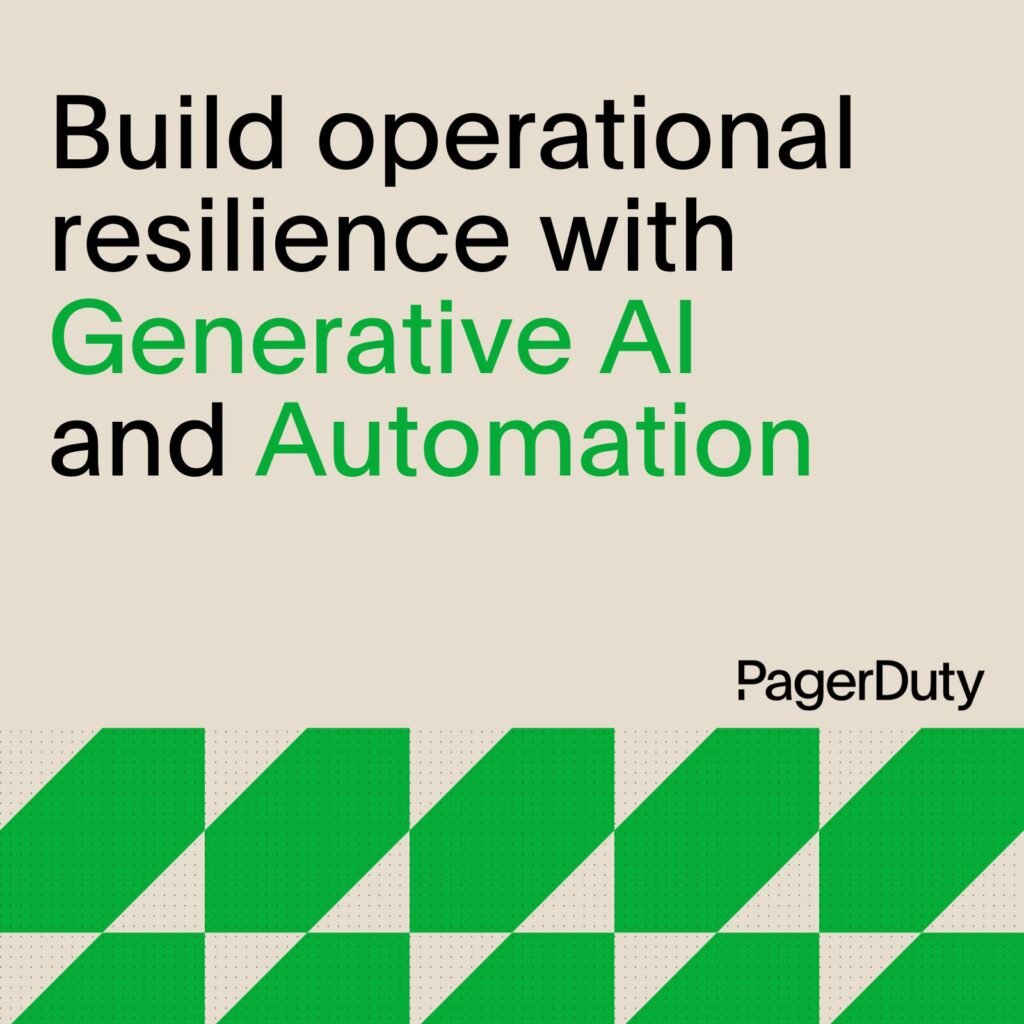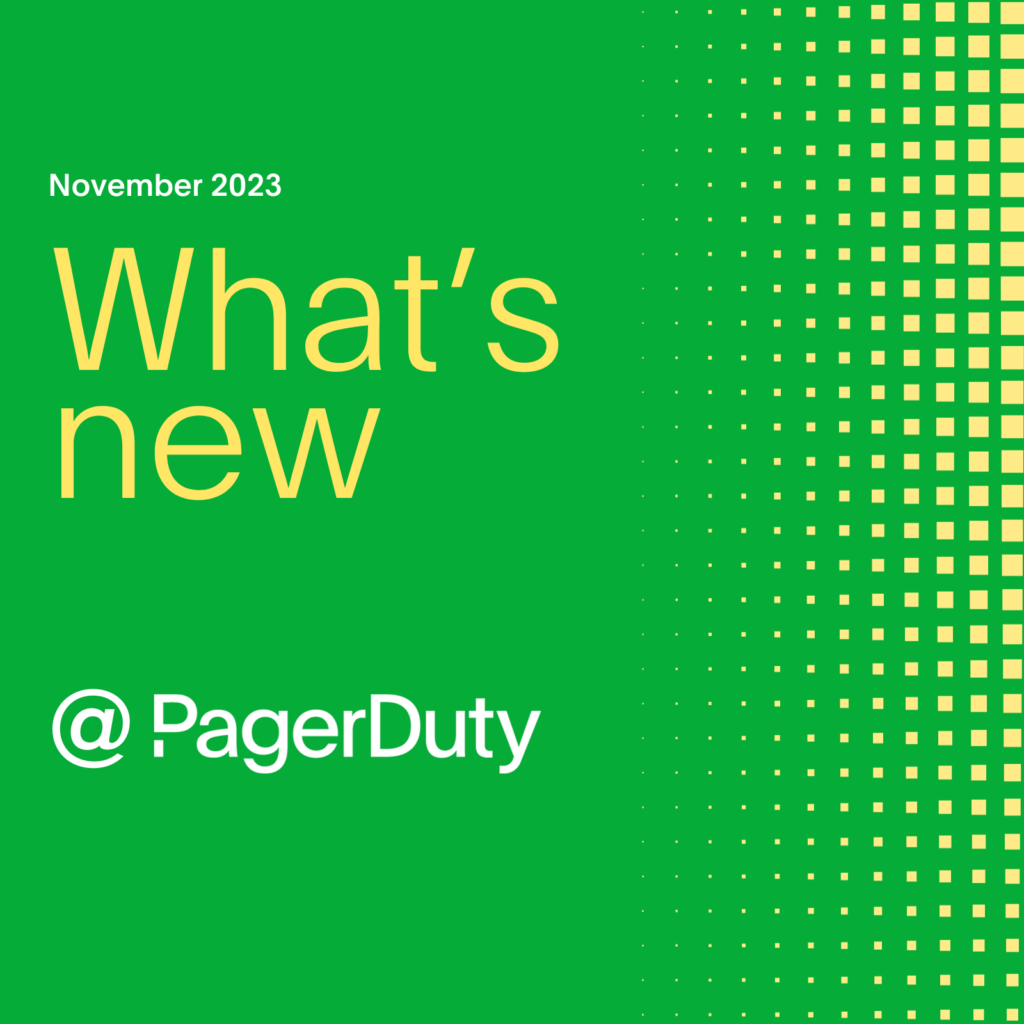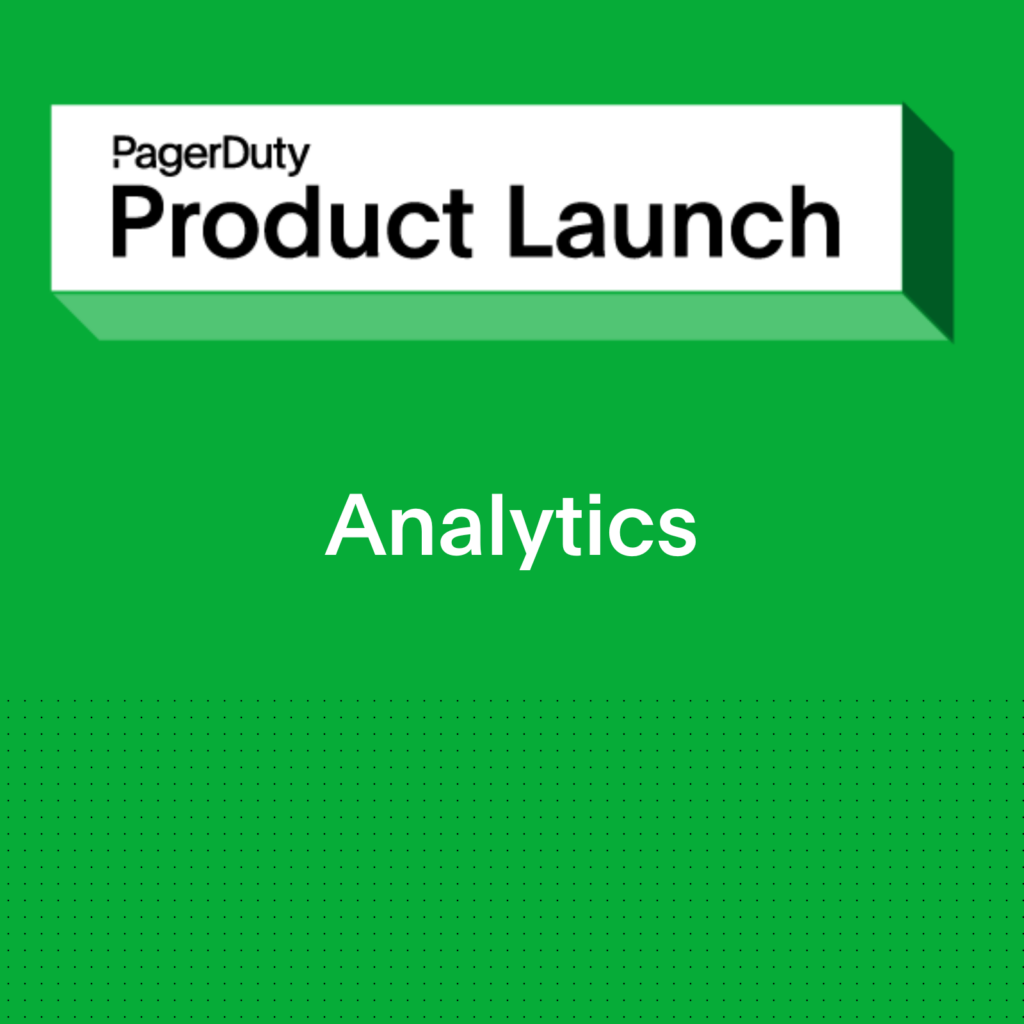What’s New: Updates to Visibility Console, Event Intelligence, Analytics, and More!
We’re excited to announce a new set of product updates and enhancements to the PagerDuty platform! PagerDuty partners with organizations to help teams create efficiencies across IT organizations and protect customer relationships. These updates will help further improve your team’s ability to manage and reduce noise, automate critical response workflows, and quickly mobilize a response in order to mitigate disruptions across your digital operations when seconds matter.
Proactive Incident Response With Event Intelligence
We understand how important it is to facilitate a rapid and precise response to business-critical incidents. With Event Intelligence, we take a unique approach to AIOps and offer capabilities that are flexible, adaptive, and team-oriented.
Event Intelligence applies machine learning to reduce unactionable events, manage the noise, and enrich incidents with deep contextual insights to help teams accelerate resolution when your business depends on it. Key capabilities include event correlation, routing and automation, noise suppression, and intelligent triage that help you better manage and reduce operational noise, predict and prevent outages, and improve responder context.
Less Fog, More Signal: Dependency-Aware Related Incidents
To help responders gain a better understanding of the breadth and scope of incident impact, we’ve enhanced PagerDuty’s Related Incidents capability set with Dependency-Aware Related Incidents to provide real-time, contextual insights across multiple services and teams. Save time by quickly finding the right people and teams to engage with, gain visibility into incidents on dependent services to help discover root cause, reduce duplicative work, and improve time-to-resolution of major incidents.
With Dependency-Aware Related Incidents, teams can:
- Easily see if dependent services are impacted by related incidents
- Accelerate the mobilization of people and teams, and reduce the time it takes to resolve major, cross-cutting incidents
- View related incidents for both business and technical services directly from the Related Incidents tab
Watch this video to get an early look at how we’ve enhanced the PagerDuty Related Incidents capability with Dependency-Aware Related Incidents.
See the demo to learn how you can save time finding the right teams to engage with during major incident response!
Paused Incident Notifications—Less Noise, More Control
We’re launching Paused Incident Notifications to give teams more control and help further reduce unactionable incidents and alert noise. We now allow time for transient problems (like flapping alerts) to self-heal before escalating alerts into incidents that may prematurely notify responders. You can now:
- Add a pause after alerts are created to let systems self-heal problems before escalating alerts into incidents that notify responders
- Temporarily suspend alerts with the “Pause Notification” event rule action
- Let PagerDuty automatically transition unresolved alerts into incidents that notify responders
- View Suspended Alerts in the alerts table
- Transition Suspended Alerts to “resolved” or “triggered” before the pause time window expires
Combine alert suppression, thresholding, and Paused Incident Notification to reduce alert noise by an average of ~60% and drive down responder fatigue! Learn more about how Paused Incident Notifications work in this product demo:
New Visibility Console (General Access)
Now available for general access is the new Visibility Console that delivers a proactive approach to incident response. NOC and Central Ops teams can now enjoy context at a glance, as well as a real-time, consolidated view of service performance that includes advanced filtering and customizable layouts. You can now ensure that stakeholders and response teams are always up-to-date with the real-time status of system health. With the new Visibility Console, teams have the ability to:
- Have a single pane-of-glass view for full context, which enables NOC and Central Ops teams to monitor their digital operations and incident response processes
- Quickly identify patterns and determine if a situation is normal or if an issue is widespread through the Service Activity module
- View the current status of business services via the Status Dashboard Module and expand on business services to reveal the impacted supporting service(s)
- Customize your Visibility Console for a shared, consolidated view of what’s going on now and what’s happened over the last 24 hours among central organizations and technical stakeholders
Take a look at the new Visibility Console 2.0 interface in this new demo below.
See the new Visibility Console 2.0 in action, visit the visibility tab within the web application, view the Visibility Console knowledge base article to learn more, or reach out to support@pagerduty.com for more information.
Real-Time Business Orchestration
Managing incident communications across teams that are increasingly distributed is a growing challenge. PagerDuty delivers the new My On-Call Shifts interface and My On-Call Shifts widget to help mobilize the right people (like engineers and experts) and teams to respond to critical issues and protect the customer experience.
My On-Call Shifts
My On-Call Shifts is now available. Seamlessly view of all of your on-call shifts across all schedules & escalation policies workload, and shift overrides on the web or via the PagerDuty mobile app.
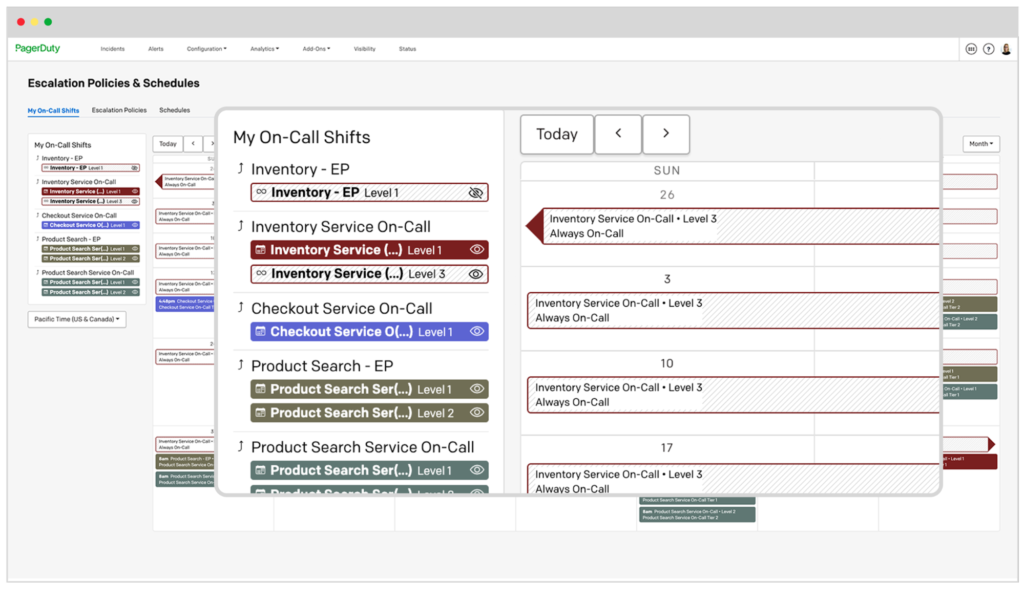
Take a look at the new My On-Call Shifts interface in this new demo below.
My On-Call Shifts Widget
In an effort to continue developing new ways to make being on call less stressful for responders, we’ve reduced the number of steps and clicks it takes to view your On-Call Shifts in the PagerDuty web application. You can see when your current upcoming shifts start and end, which schedules and escalation policies you’re a part of, and what you’re always on call for. Simply log in and view the widget in the right hand rail—no clicking required!
Check out a demo of the new My On-Call Shifts Widget!
Self-Service Extensibility With REST API
New APIs are accessible via the PagerDuty REST API, enabling you to seamlessly integrate with third-party or custom tools that you love to use.
Analytics API (Early Access)
You can now efficiently consume raw incident data and associated metrics, and deliver customized views to drive improved processes and better business outcomes. The Analytics API is available to all customers as an early access product. Please reach out to support@pagerduty.com to determine the requirements of the Early Access Program.
Get a glimpse of the Analytics API in action and watch the demo below!
The Tools You Love: New Automation Integrations
We continue to expand our integration ecosystem with new, native integrations so you can work with the tools you want.
In addition to our existing integration with Amazon EventBridge, we recently released integrations with Rundeck (demo below), Ayehu, and Pliant for runbook automation. These integrations allow you to automate critical, manual IT workflows to improve communication across the organization and reduce resolution times.
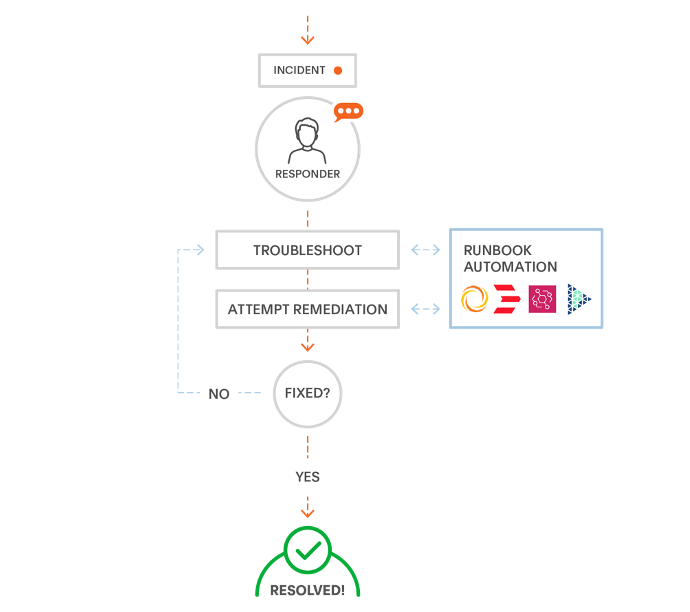
PagerDuty + Rundeck Integration: Updated Demo!
Finally, we’d like to share a demo that reveals the powerful integration between PagerDuty and Rundeck for runbook automation. Before diving into that, here’s a little detail about how the integration works.
PagerDuty communicates with Rundeck over HTTP, utilizing webhooks and REST APIs. By integrating PagerDuty and Rundeck, you’ll gain the capabilities that enable you and your team to drive quicker resolution and reduce customer impact. You can:
- Trigger auto-diagnostics or auto-remediation via Rundeck jobs at the start of a PagerDuty incident
- Manually trigger Rundeck jobs from custom actions in the PagerDuty UI at any time during an incident (run health/performance checks, restart a service or server, roll back a deployment, etc.—the possibilities are endless)
- Have actions taken via Rundeck automatically update PagerDuty incident timelines. These notes keep incident records up-to-date and keep everyone informed about actions taken (and results of those actions)
We’re excited to share how you can experience shorter incidents and fewer escalations through this PagerDuty + Rundeck Runbook Automation demo, delivered by Rundeck Co-founder and Chief Product Officer Damon Edwards.
Get started today and learn more about PagerDuty and Rundeck here:
- View the latest PagerDuty + Rundeck Runbook Automation Demo: Shorter Incidents. Fewer Escalations
- Read the blog: How PagerDuty and Partner Rundeck Enable Business Continuity For Digital Operations
- View other PagerDuty + Rundeck demos to help you get started
- Visit the PagerDuty + Rundeck Integration page
- Visit PagerDuty + Rundeck on Rundeck’s site
To get started with the new capabilities from our July updates and enhancements, reach out to your account manager and check out our Knowledge Base, Platform Release Notes, and Mobile Release Notes for more information.
In case you have some catching up to do, you can read about our June updates and view some videos that introduce how PagerDuty enables you to work where you are, with the tools you love, featuring our June 2020 Product updates.
View the latest PagerDuty Pulse, available on demand since July 29, 2020, to learn about all of the latest capabilities from the past quarter! Join our product managers as they get hands-on with our newest capabilities and choose the capabilities that best suit you and your business.
